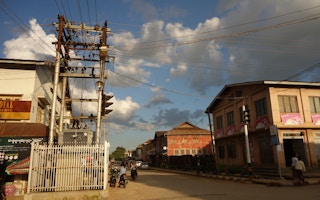Renewable energy could bring electricity to the 65 million people in Southeast Asia without it—if industry and governments can improve market regulations and the bankability of renewables projects.
To continue reading, subscribe to Eco‑Business.
There's something for everyone. We offer a range of subscription plans.
- Access our stories and receive our Insights Weekly newsletter with the free EB Member plan.
- Unlock unlimited access to our content and archive with EB Circle.
- Publish your content with EB Premium.
Speakers at the Asia Clean Energy Summit in Singapore last week noted that Southeast Asia is a market ripe for renewable energy development. Rapidly emerging economies, a favourable climate for solar and wind energy generation, and a total population of 640 million makes the region a potential hotspot for the clean energy industry.
But only about 45 per cent of the total number of renewable energy projects in Southeast Asia are bankable, estimated Allard Nooy, chief executive officer of infrastructure investment company InfraCo Asia.
“The remaining 55 per cent of projects currently in the market are unbankable without government or other mechanisms,” he said.
Bankability refers to the financial viability of a renewables project, and whether or not a bank will support it. For instance, Vietnam’s draft template for solar investments released earlier this year, has been criticised for being unbankable.
A second but no less pressing issue is regulation. Nooy said countries such as the Philippines still take a protectionist approach to foreign direct investment, limiting the amount of funds entering the renewable energy space.
The region has an abundance of natural energy resources, but lags developed economies when it comes to building clean energy generators. Southeast Asia’s energy demand has grown by 60 per cent in the last 15 years, according to the International Energy Agency—demand that countries such as Indonesia and Vietnam are meeting through the construction of new coal-fired power plants. Experts cite fossil fuel subsidies as one reason for this.
While speakers agreed that the falling cost of renewable energy would push Southeast Asia towards more sustainable means of electrification, financing it remained a stumbling block.
The development of microgrids, which generate electricity locally within a limited area independent of national energy, is one example. Calling microgrids “the future”, Holger Schenk, director of technology at Solar Philippines said the difficulty in rolling out microgrids was not in the hardware or software, but in making projects bankable.
Nooy commented that technological improvements have made microgrids commercially viable today, whereas they weren’t three years ago. The last mile of energy systems, where power is delivered to the users, tends to be the most expensive part of an electricity generation network, and microgrids are a solution to this problem.
In rural Myanmar, InfraCo Asia builds solar facilities and contracts “anchor tenants” for the power, then rolls out microgrids around them, he elaborated.
David Koh, regional head of Standard Chartered Bank, said that a number of banks were ready to support clean energy and “need people to bring ideas to us and let us know what you’re trying to do”.
He said that his bank wants to help countries in Asia and Africa leapfrog to clean technologies as they develop, rather than build fossil fuel-based technologies that would have to be reformed later on, as has been the experience in China and the UK.
However, most banking groups continue to fund the development of fossil fuel-based power projects in Southeast Asia, even as the more progressive banks begin to raise their sustainability game.
Corporate citizens
Companies that commit to sourcing clean energy can help to drive Southeast Asia’s transition to more renewable forms of power, experts said.
In a presentation about the solar and wind energy markets, Justin Wu, head of Asia-Pacific for Bloomberg New Energy Finance, noted that the Asia Pacific region has almost as much renewable energy generation capacity in power purchasing agreements (PPAs) as Europe—and nearly all of it is in India.
A PPA is a contract to purchase energy between a renewable energy developer and a creditworthy buyer.
There is a good opportunity to push renewable energy development in Southeast Asia through the use of PPAs and demand from the corporate sector, Wu said. “Google, if it were a country, would grow by 21 per cent in annual electricity demand. Is there any country in the world that could achieve that kind of growth?”
He pointed to the international coalition of companies known as RE100 in which members pledge to be powered only by renewable energy, as an opportunity for renewables developers. Asian members include document services firm Ricoh and Southeast Asia’s largest bank DBS.
Referring to Wu’s presentation, Koh said that Google and Apple’s commitment to purchasing only renewable energy was reason for optimism. “[From a bank’s perspective] those are the energy buyers we can hang our hat on, they are eminently bankable,” he added.
Wu was similarly hopeful. “[Corporates driving renewable energy demand is] really at a starting point right now in Asia, but it’s going to scale up as more companies join in.”










